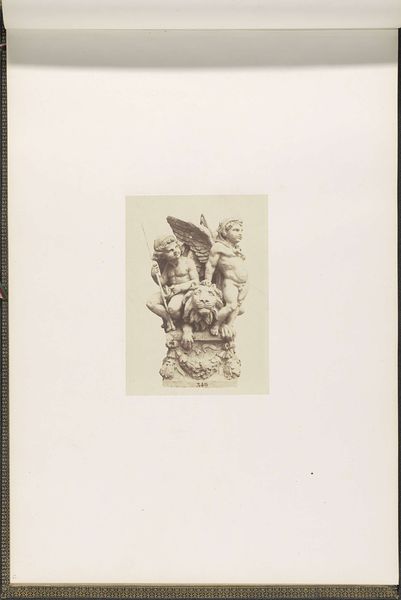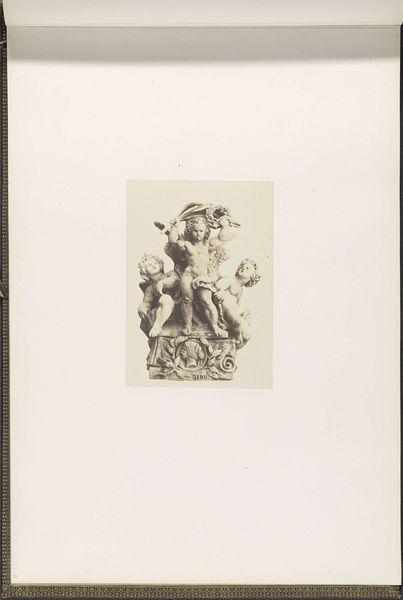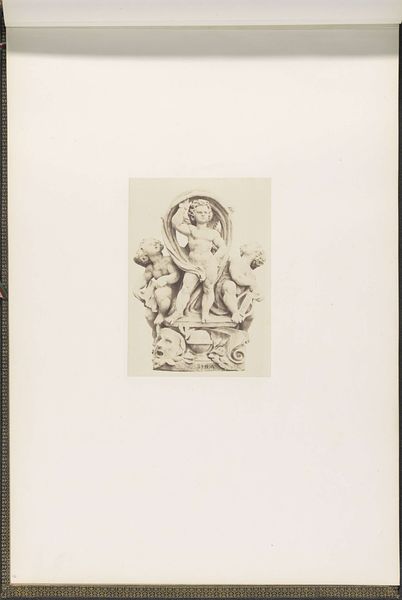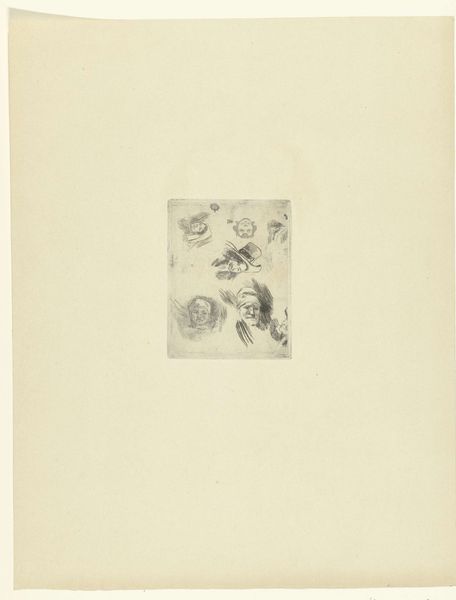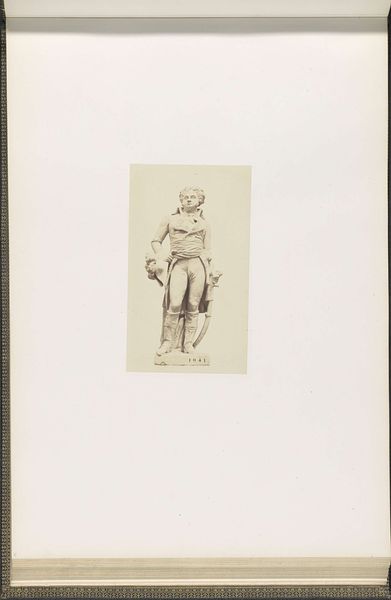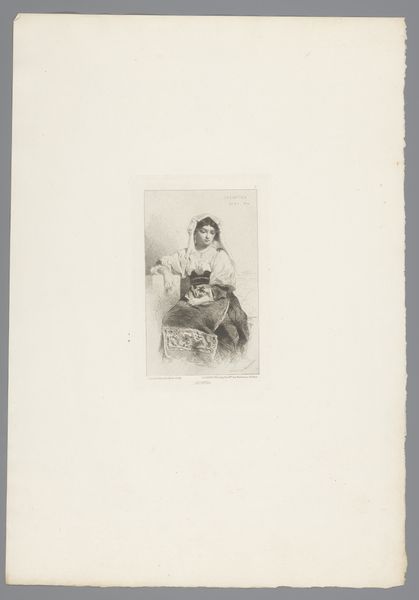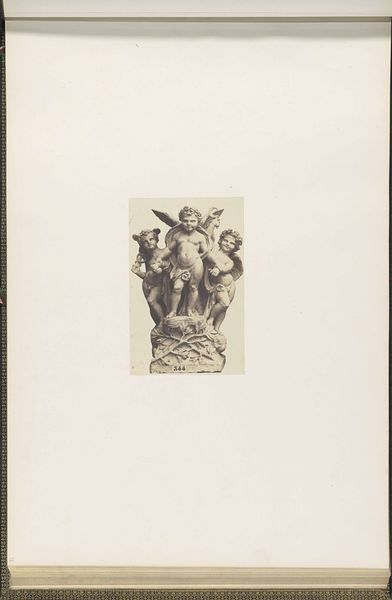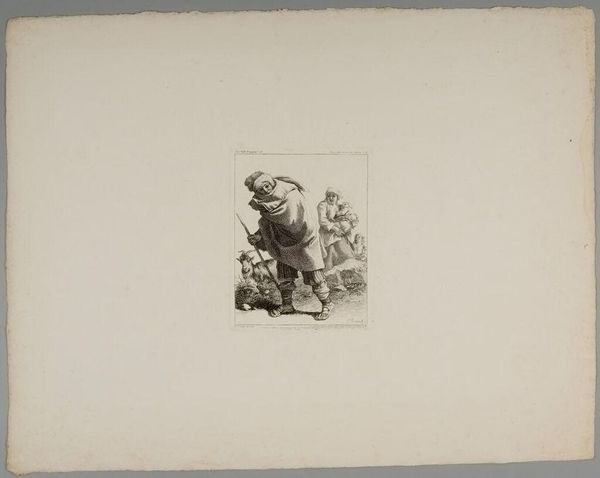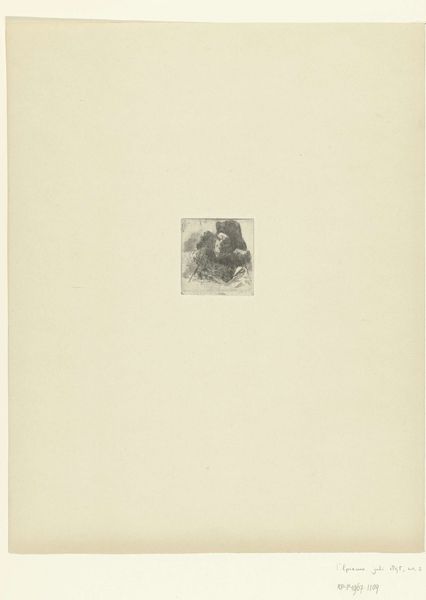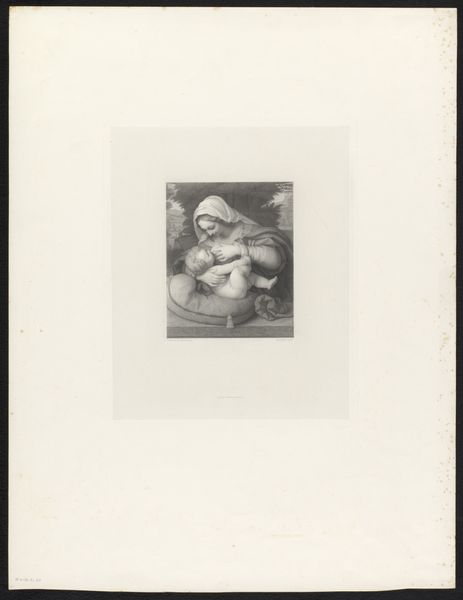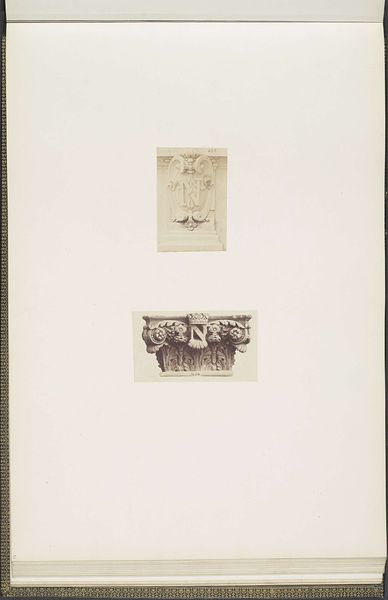
Gipsmodel voor beeldhouwwerk op het Palais du Louvre: "Attributs de la Guerre" door Louis Léopold Chambard c. 1855 - 1857
0:00
0:00
print, photography, sculpture
#
neoclacissism
# print
#
photography
#
sculpture
Dimensions: height 376 mm, width 523 mm
Copyright: Rijks Museum: Open Domain
Editor: Here we have a print of Edouard Baldus's photograph of Louis Léopold Chambard’s plaster model, "Attributs de la Guerre," circa 1855-1857, destined for the Louvre. It has such a classical feel. What’s your interpretation of this work? Curator: The image speaks volumes about the labor and materiality intertwined with even the most seemingly refined neoclassical art. Consider Baldus's photographic print – itself a product of specific chemical processes and labor – documenting Chambard’s plaster model. We are, essentially, presented with a copy of a model intended for eventual translation into stone. What interests me are the layers of production and the ways in which "high art" relies on the more industrial and often overlooked processes to be brought into being. Where does 'art' really begin? Editor: So, you are saying the plaster model itself is part of the artistic production? I’ve never really considered that the model could also be considered a kind of product of the artistic process too. Curator: Precisely! Think of the artisanal labour involved in producing the plaster model. Its role is inherently linked to material concerns and manufacturing—and how it's essentially made as the template for stone sculpture. It blurs that somewhat artificial line we often draw between craft and art. What kind of labor was involved do you imagine to carve that intricate design into the stone? It suggests so much that doesn't meet the eye on initial observation. Editor: It completely changes my perception! Seeing this not just as a photograph, but as a record of layered production... very insightful. Curator: And hopefully prompting further exploration into the economic and social structures which support such artistry! Thank you for pointing it out to me!
Comments
No comments
Be the first to comment and join the conversation on the ultimate creative platform.
